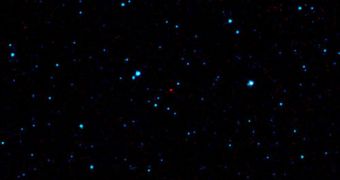A recent review has determined that the American space agency is severely underfunded for the mission the Congress has appointed for it – detecting most near-Earth objects (NEOs). These objects include comets, asteroids, meteorites and other rocks that could be set on a collision course to our planet. NASA needs to determine the existence, paths and threat risks posed by all NEOs that are larger than 460 feet (140 meters) in diameter, but it has only been able to gather data on very few of them thus far. Now, a proposal shows that two new telescopes, working together, could identify as much as 90 percent of these objects, Space reports.
The thing is that these new observatories would cost about $1.1 billion to construct. This is a lot of money, especially when considering that the agency has only been given a few million dollars per year for this line of research until now. According to the new proposal, the innovative observatories would build on the legacy set by the NASA Spitzer telescope, one of the most effective infrared instruments ever created. Technologies from the Kepler Space Telescope, and the WISE space observatory could also be incorporated in the new, 0.5-meter observatories.
The first of the new rock detectors would sit in orbit directly between the Earth and the Sun, while the second one would have to be placed on a Venus-trailing orbit, but closer to the star. By themselves, each of the telescopes would have sufficient power to find more than 90 percent of all large NEOs. The Congress gave NASA this appointment in 2005, but failed to provide sufficient funding to allow for the task to be carried out. But even if the billion dollars are awarded for constructing the new detectors, knowing about the impending problem amounts to nothing if no mitigation procedures are set in place.
“In terms of mitigation, there is nothing that we would be confident in deploying next week,” University of Maryland astronomer Michael A'Hearn said. He has been the leader of the mitigation panel that has elaborated the conclusions of the new report. The document was released last week by the National Academy of Sciences. Experts believe that the two new telescopes should be made capable of observing the skies in infrared wavelengths, as these frequencies can be a lot more efficient at detecting objects of comparable size than visible wavelengths.
One of the most important aspects of mitigation, experts believe, is international cooperation. Without such an effort, there is not much any single nation can do when the planet is faced with an impending NEO impact. “If you launch to mitigate and only move it halfway, that just moves it from my country to your country. Because of that, I think we need very real international collaboration before we launch mitigation efforts,” A'Hearn concluded.

 14 DAY TRIAL //
14 DAY TRIAL //